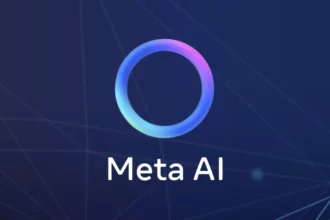Table of Contents
ToggleWhat is GPT-4o-transcribe?
GPT-4o-transcribe is a high-accuracy real-time transcription model designed by Azure OpenAI. It enables continuous speech-to-text conversion by streaming audio over WebSocket connections. This technology offers low latency, making it ideal for live captioning, voice assistants, and meeting transcription. A lighter alternative, GPT-4o-mini-transcribe, provides faster performance with slightly lower accuracy.
Core Features of GPT-4o-transcribe Models
- GPT-4o-transcribe: Full-featured, prioritizes transcription accuracy
- GPT-4o-mini-transcribe: Reduced latency and faster response, suitable for less resource-intensive tasks
Both models support real-time audio streaming via WebSockets or WebRTC. This capability enables applications to receive immediate transcription updates without waiting for the entirety of the audio input.
How Does Azure OpenAI Realtime Transcription API Work?
The Realtime Transcription API differs from the standard REST-based speech-to-text services by maintaining an open WebSocket stream. This connection allows continuous audio data input and near-instant text output. Unlike REST APIs, which process audio in chunks and respond with final transcripts, the realtime API returns incremental transcription updates, reflecting speech as it happens.
Setting Up Real-Time Transcription in Python
This setup involves several distinct steps:
- Import libraries and load environment variables: Use packages like websocket, pyaudio, and dotenv to manage audio capture and secure API keys.
- Configure audio input: Define parameters such as sample rate (24,000 Hz), format (16-bit PCM), and chunk size (1024 samples).
- Establish a WebSocket connection: Pass headers including the API key and specify the endpoint with transcription intent.
Example snippet shows creating an audio stream from the microphone and preparing a threaded loop to send audio in base64-encoded buffers.
Managing the Transcription Session
Upon WebSocket connection, the client sends a session update JSON message specifying:
- Audio format (e.g., pcm16)
- Transcription model to use (gpt-4o-mini-transcribe or gpt-4o-transcribe)
- Prompt or language settings
- Noise reduction type (near-field for headsets, far-field for room mics)
- Turn detection configuration using voice activity detection (VAD)
This setup directs the model on how to process the incoming audio stream and generate incremental transcripts.
Processing Transcription Output
The WebSocket client handles several event types:
- conversation.item.input_audio_transcription.delta: Delivers partial transcription updates reflecting ongoing speech.
- conversation.item.input_audio_transcription.completed: Provides completed transcriptions for discrete audio segments.
- item: Contains final transcription results.
This sequential event processing supports live display of text, enhancing responsiveness for end users.
Error Handling and Connection Lifecycle
Robust clients handle WebSocket errors with clear logging. Closing events trigger cleanup of audio streams and termination of audio interfaces. This management prevents resource leaks and maintains stability in production settings.
Customization and Deployment Tips
- Model selection can balance accuracy versus latency
- Audio parameters such as sample rate and chunk size are adjustable for device compatibility
- Noise reduction types adapt transcription for headset or room microphones
- Turn detection modes optimize interaction for varied speaking styles
- Handle API keys securely following Azure OpenAI best practices
- Implement reconnection logic and rate limit monitoring to ensure reliability
Use Cases and Applications
GPT-4o-transcribe and its mini variant power diverse real-time speech applications. Examples include:
- Live captioning for broadcasts and events
- Transcribing meetings or interviews automatically
- Voice-controlled virtual assistants with immediate feedback
- Accessibility tools converting spoken words to text in real-time
Summary of Key Points
- GPT-4o-transcribe delivers accurate, real-time speech transcription via WebSocket streams.
- A lighter GPT-4o-mini-transcribe trades small accuracy losses for lower latency.
- Setup involves capturing audio via Python, sending base64-encoded buffers to the Azure OpenAI Realtime API.
- Incremental transcription events enable live text updates for various applications.
- Customization allows model choice, audio and noise reduction settings, and turn detection tweaking.
- Best practices include secure API key storage, error handling, and account for rate limits.
Developers can extend the basic Python WebSocket client to deploy scalable, responsive speech-to-text solutions using GPT-4o-transcribe technology.
GPT-4o-transcribe: The Future of Real-Time Speech Recognition is Here
So, you’re curious about GPT-4o-transcribe, huh? Well, here’s the scoop in one bite: GPT-4o-transcribe is a cutting-edge, real-time speech-to-text model designed to transcribe live audio streams with high accuracy, using WebSocket connections to stream audio and deliver on-the-fly transcriptions. That means no more waiting for your recorded audio to play Catch-Up; GPT-4o-transcribe listens and types in real-time.
Let’s delve into what makes GPT-4o-transcribe a game changer and how you can bring this tech magic into your own projects.
The Two Faces of Azure OpenAI’s Transcription Power
Meet the family: Microsoft Azure OpenAI offers two transcription models in this arena—gpt-4o-transcribe and gpt-4o-mini-transcribe. They share a common goal but come in different sizes and speeds. The full-fledged GPT-4o-transcribe offers supreme accuracy, while its little sibling, GPT-4o-mini-transcribe, trades a teeny drop in accuracy for speed and lower latency.
Why choose between them? If you want crystal-clear transcripts and aren’t pressed for speed, GPT-4o-transcribe is your go-to. If you need near-instant feedback and can tolerate minor imperfections, like during a live conversation, the mini version shines.
Real-Time Transcription API vs Standard REST API: The Speed Showdown
Forget waiting after you hit “record” to find out what was said—that’s old news. Azure’s Realtime API shifts gears with WebSockets or WebRTC connections that stream audio continuously. This live feed lets developers harness instant transcription, perfect for captioning live events, meetings, or powering responsive voice assistants. Unlike the standard REST API, which waits til the end of a clip to send text back, the Realtime API processes chunks as they come.
Think of it like a waiter who brings you bites as they’re ready instead of dumping the entire meal on your plate when the kitchen’s done.
Setting Up Your Python Environment: A Quickstart Guide
Ready to put your boots on and start streaming? Here’s what you need in your Python toolkit:
- pyaudio to capture live mic input
- websocket-client for the WebSocket connection
- dotenv to manage environment variables like API keys
Load keys safely with:
import os
from dotenv import load_dotenv
load_dotenv('azure.env')
OPENAI_API_KEY = os.getenv('AZURE_OPENAI_STT_TTS_KEY')
if not OPENAI_API_KEY:
raise RuntimeError("❌ OPENAI_API_KEY is missing!")
Notice the emphasis on security here? Storing keys outside the script protects your data—and your sanity.
Listening In: How WebSocket Connection Powers the Transcription
The magic starts when the client opens a WebSocket connection. The session is configured to specify audio format (16-bit PCM), the chosen transcription model, language setup, and noise reduction mode tailored for your microphone type—whether it’s your trusty gaming headset or a fancy conference mic.
The server sets up turn detection using Voice Activity Detection (VAD), meaning it knows when you start and stop talking. This cuts down on awkward silences or chopped-off phrases.
def on_open(ws):
print("Connected! Start speaking...")
session_config = {
"type": "transcription_session.update",
"session": {
"input_audio_format": "pcm16",
"input_audio_transcription": {
"model": "gpt-4o-mini-transcribe",
"prompt": "Respond in English."
},
"input_audio_noise_reduction": {"type": "near_field"},
"turn_detection": {
"type": "server_vad",
"threshold": 0.5,
"prefix_padding_ms": 300,
"silence_duration_ms": 200
}
}
}
ws.send(json.dumps(session_config))Notice the prompt parameter? You can customize it. Want subtitled Shakespeare style? “Speak in iambic pentameter,” perhaps?
How Audio Streaming Works Behind the Scenes
The system captures audio in chunks from your mic, encodes it in base64, then sends it off as JSON messages tagged appropriately for Azure to chew on:
- Reads: stream.read(CHUNK) grabs raw mic data.
- Encodes: Turns binary data into a text string with base64 encoding.
- Sends: Uploads the data chunk through the WebSocket connection.
Here’s a glimpse of the streaming thread that runs quietly while you jabber away:
def stream_microphone():
try:
while ws.keep_running:
audio_data = stream.read(CHUNK, exception_on_overflow=False)
audio_base64 = base64.b64encode(audio_data).decode('utf-8')
ws.send(json.dumps({"type": "input_audio_buffer.append", "audio": audio_base64}))
except Exception as e:
print("Audio streaming error:", e)
ws.close()This threaded approach keeps your main program responsive while feeding audio data efficiently. Imagine multitasking ninjas streaming your words to GPT-4o without missing a beat.
Decoding Transcription: Handling Live Transcription Events
Once the audio is sent, GPT-4o-transcribe replies with a series of events:
- conversation.item.input_audio_transcription.delta: little bits of text building up live.
- conversation.item.input_audio_transcription.completed: text for a complete phrase or sentence chunk.
- item: the final transcript for a speech segment.
This gives you flexibility. Display those fine incremental pieces for instant feedback or wait for polished final results. The Python event handler looks like this:
def on_message(ws, message):
try:
data = json.loads(message)
event_type = data.get("type", "")
print("Event type:", event_type)
if event_type == "conversation.item.input_audio_transcription.delta":
transcript_piece = data.get("delta", "")
if transcript_piece:
print(transcript_piece, end=' ', flush=True)
if event_type == "conversation.item.input_audio_transcription.completed":
print(data.get("transcript", ""))
if event_type == "item":
transcript = data.get("item", "")
if transcript:
print("\nFinal transcript:", transcript)
except Exception: passIt’s like your personal stenographer tapping away gently, only faster and without the finger cramps.
Avoiding Tripwires: Error Handling and Cleanup
Real life, and real-time APIs, aren’t always smooth rides. The code accounts for connection errors and handles cleanup gracefully:
def on_error(ws, error):
print("WebSocket error:", error)
def on_close(ws, close_status_code, close_msg):
print("Disconnected from server.")
stream.stop_stream()
stream.close()
audio_interface.terminate()Nothing worse than your recorder crashing mid-presentation, right? This setup ensures resources are closed properly, preventing nasty memory leaks.
Customization: Tweak It Your Way
GPT-4o-transcribe offers customization options that let you tailor transcription to your needs:
- Model choice: Go full-bore accuracy or lightning-fast mini version.
- Audio parameters: Adjust sample rate (24000 Hz), channels (mono/stereo), and chunk sizes.
- Prompt: Set language instructions or context to improve transcription relevance.
- Noise reduction: Near-field for headsets, far-field for conference rooms, reducing background racket.
- Turn detection: Switch between server VAD and semantic VAD to better handle pauses and speaker turns.
Practical example: In a noisy room, toggle on far-field noise reduction. Hosting a multilingual webinar? Pass the language code in the prompt for better output.
Deploying in the Wild: Best Practices
Launching GPT-4o-transcribe into production? Here’s your checklist:
- Authentication: Securely store API keys; never hard-code.
- Error handling: Implement automatic reconnects to handle network glitches.
- Performance: Tune your audio streaming settings based on your environment and bandwidth.
- Rate limits: Keep Azure OpenAI’s API quotas in mind to avoid surprise throttling.
- Fallbacks: Prepare alternative plans (like saving audio locally) if real-time fails.
Alert: No one wants a frozen caption screen during the CEO’s big speech. Plan accordingly.
Why GPT-4o-transcribe Matters Today
These transcription models are a leap forward in speech recognition tech. By streaming audio live and getting fast, accurate transcripts back, developers can build apps that genuinely respond to user speech in the moment.
Whether you’re building:
- Live captioning for accessibility at conferences
- Voice-activated controls in smart homes
- Meeting transcription apps that capture every word and sentiment
GPT-4o-transcribe steps up as an invaluable tool behind the scenes.
And if Python isn’t your jam yet, the concepts translate easily to other languages—WebSockets, audio capture, JSON messages: all pretty universal in today’s programming landscape.
Ready to Code? Jump In!
For those who like it all in one place, here’s an end-to-end Python code example demonstrating this entire process. From microphone capture to printing live transcripts, you’ll see GPT-4o-transcribe in action.
In summary, GPT-4o-transcribe empowers real-time speech recognition with an elegant WebSocket design, customizable session settings, and robust error management. It’s a perfect base if you want your apps to hear and understand users instantly.
Curious how far this tech will go? With every update, expect sharper accuracy, language support, and integration friendliness. The voice revolution is here—dive in early and make your software truly listen.
What is the main difference between GPT-4o-transcribe and GPT-4o-mini-transcribe?
GPT-4o-transcribe offers higher accuracy for transcription tasks. GPT-4o-mini-transcribe is faster with lower latency but slightly less accurate. Developers can select based on their needs for speed or precision.
How does the Realtime Transcription API differ from the standard REST transcription API?
The Realtime API streams audio continuously using WebSockets or WebRTC. It provides immediate transcription feedback, suitable for live captioning or voice assistants. Standard REST API processes audio in batch after recording.
What audio format and settings does GPT-4o-transcribe require for real-time transcription?
The audio must be in 16-bit PCM format (pcm16). Recommended rate is 24000 Hz with a single audio channel. These settings ensure compatibility with the model’s input requirements.
How is audio streamed to the GPT-4o-transcribe model during a session?
Audio is captured from a microphone, encoded in base64, and sent continuously via a WebSocket connection. This streaming approach allows the model to transcribe audio in real-time without waiting for full recordings.
What happens if there is an error or disconnection during the WebSocket session?
Error callbacks handle connection issues and print error messages. On disconnect, the audio stream is stopped and resources are released to avoid problems from leftover streams or threads.




